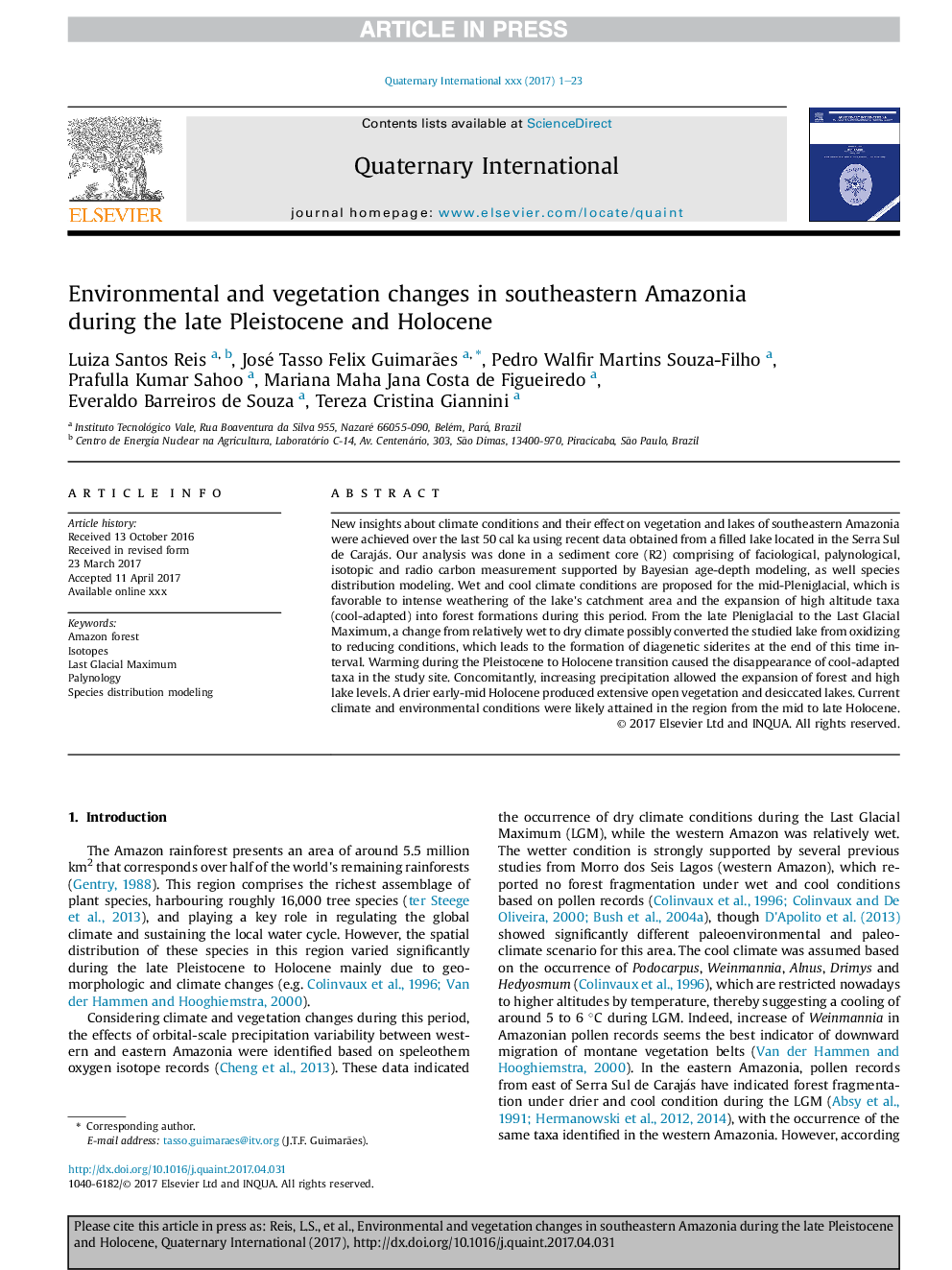| کد مقاله | کد نشریه | سال انتشار | مقاله انگلیسی | نسخه تمام متن |
|---|---|---|---|---|
| 5113053 | 1484074 | 2017 | 23 صفحه PDF | دانلود رایگان |
عنوان انگلیسی مقاله ISI
Environmental and vegetation changes in southeastern Amazonia during the late Pleistocene and Holocene
ترجمه فارسی عنوان
تغییرات زیست محیطی و گیاهی در جنوب شرقی آمازون در اواخر پریستوسن و هولوسن تغییر می کند
دانلود مقاله + سفارش ترجمه
دانلود مقاله ISI انگلیسی
رایگان برای ایرانیان
کلمات کلیدی
جنگل آمازون، ایزوتوپها، آخرین گلادیاتور حداکثر، پالینولوژی، مدل سازی توزیع گونه،
موضوعات مرتبط
مهندسی و علوم پایه
علوم زمین و سیارات
زمین شناسی
چکیده انگلیسی
New insights about climate conditions and their effect on vegetation and lakes of southeastern Amazonia were achieved over the last 50Â cal ka using recent data obtained from a filled lake located in the Serra Sul de Carajás. Our analysis was done in a sediment core (R2) comprising of faciological, palynological, isotopic and radio carbon measurement supported by Bayesian age-depth modeling, as well species distribution modeling. Wet and cool climate conditions are proposed for the mid-Pleniglacial, which is favorable to intense weathering of the lake's catchment area and the expansion of high altitude taxa (cool-adapted) into forest formations during this period. From the late Pleniglacial to the Last Glacial Maximum, a change from relatively wet to dry climate possibly converted the studied lake from oxidizing to reducing conditions, which leads to the formation of diagenetic siderites at the end of this time interval. Warming during the Pleistocene to Holocene transition caused the disappearance of cool-adapted taxa in the study site. Concomitantly, increasing precipitation allowed the expansion of forest and high lake levels. A drier early-mid Holocene produced extensive open vegetation and desiccated lakes. Current climate and environmental conditions were likely attained in the region from the mid to late Holocene.
ناشر
Database: Elsevier - ScienceDirect (ساینس دایرکت)
Journal: Quaternary International - Volume 449, 25 August 2017, Pages 83-105
Journal: Quaternary International - Volume 449, 25 August 2017, Pages 83-105
نویسندگان
Luiza Santos Reis, José Tasso Felix Guimarães, Pedro Walfir Martins Souza-Filho, Prafulla Kumar Sahoo, Mariana Maha Jana Costa de Figueiredo, Everaldo Barreiros de Souza, Tereza Cristina Giannini,
